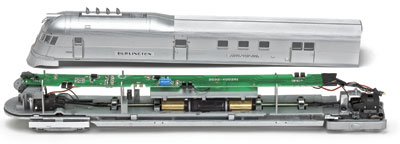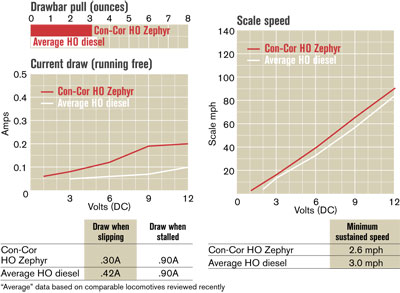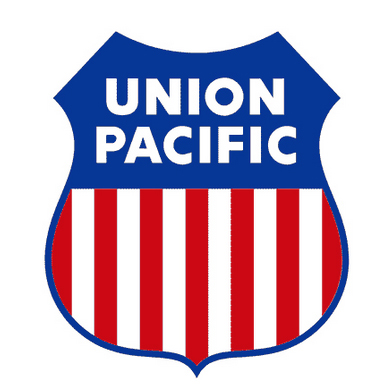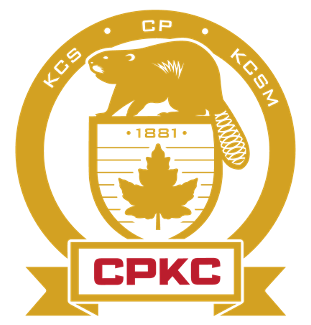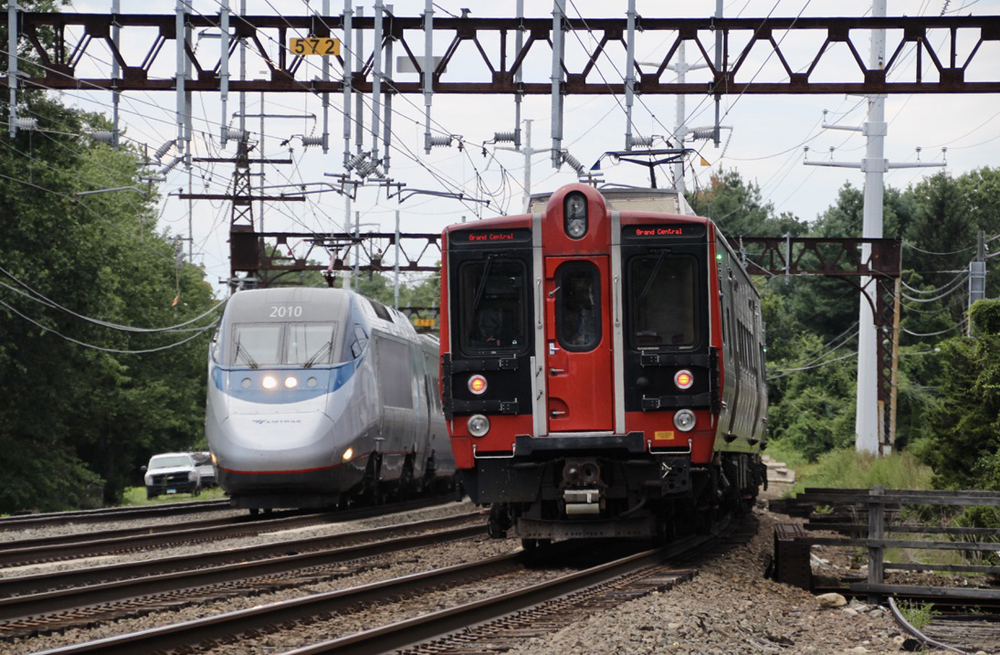The Zephyr was the brainchild of Chicago, Burlington & Quincy RR president Ralph Budd, who was searching for ways to reduce costs and attract more passengers. The Burlington developed this new lightweight train as a joint project with the Edward G. Budd Manufacturing Co. and General Motors’ Electro-Motive Corp. It went into regular service in 1934.
The original three-car Zephyr included everything found in a daytime passenger train. Its lead car contained the cab up front (talk about a brave engineer), followed by the diesel-electric power plant, a Railway Post Office apartment and a small baggage room. The second car was fitted with an express compartment, a buffet for meal preparation, and seats for 20 passengers. The last car had coach seats for 40 passengers, two rest rooms, and an observation-lounge. All of this was packed into a train 197 feet long.
Prototype drawings of the Zephyr were published in the January 1999 Model Railroader magazine. Fortunately, the original Zephyr has been preserved, restored to its original appearance, and is now on permanent display at the Museum of Science and Industry in Chicago. A virtual tour of the train’s interior is available on the museum’s Web site www.msichicago.org.
The model Zephyr is made of well-detailed plastic body parts, with a heavy die-cast metal floor in the power car. Both of the passenger cars have plastic underframes with sheet metal weights sandwiched beneath the interiors. Flush-mounted clear plastic glazing fits tightly into the window openings, and each strip has loops along the bottom edge that engage latches to retain the floors.
All four trucks are fitted with electrical pickups concealed behind the sideframes, and these pickups are hard-wired into the electrical system. With split axles, all 16 wheels pick up electrical current for smooth operation.
A set of printed-circuit boards ride on top of the interior bulkheads. All three boards have light-emitting diodes mounted on their undersides to illuminate the seats with a bluish light that simulates fluorescent lamps. Eight-pin plugs between the cars connect the PC boards to operate the directional lighting circuits.
The power car’s PC board has an NMRA-recommended Digital Command Control (DCC) 8-pin socket and two extra (unused) pins that are mounted underneath the board. There’s plenty of room within the carbody for a decoder. A speaker opening is cast into the power car’s underframe to help any purchaser who decides to install a DCC diesel sound system.
Rigid plastic diaphragms snap onto the tops of both shared trucks to cover the spaces and hide the electrical connections between cars.
All of the trucks have realistic skirting attached to the sideframes, except for the lead truck which has a set of clever pivoted skirts. These skirts are attached to the floor and swing with the truck. The model can negotiate 18″-radius curves, though its sleek styling looks much better gliding around wider-radius curves (24″ and up).
Overall, Con-Cor has certainly captured the pioneering spirit of the prototype with this nicely detailed, smooth-performing model.
Price: $379
Manufacturer
Con-Cor International
8101 East Research Ct.
Tucson, AZ 85710
www.all-railroads.com
Description
Plastic-and-metal ready-to-run three-car streamliner
Road names
Chicago, Burlington & Quincy, and painted without lettering
Features
Drawbar pull: 3 ounces
Dual flywheel drive
8-wheel drive with hard-wired 16-wheel electrical pick-up
Flush-mounted window glazing
Interior details and lights
Minimum radius: 18″
NMRA-recommended Digital Command Control (DCC)
8-pin decoder socket
NMRA RP-25 wheels (in gauge)
No couplers
Overall length, 197 scale feet (27½”)
Train weight: Power car, 10.5 ounces; coach, 3 ounces; observation car, 3.5 ounces; 17 ounces overall
White light-emitting-diode constant directional headlights with red marker lights





 Con-Cor HO Zephyr streamliner
Con-Cor HO Zephyr streamliner
